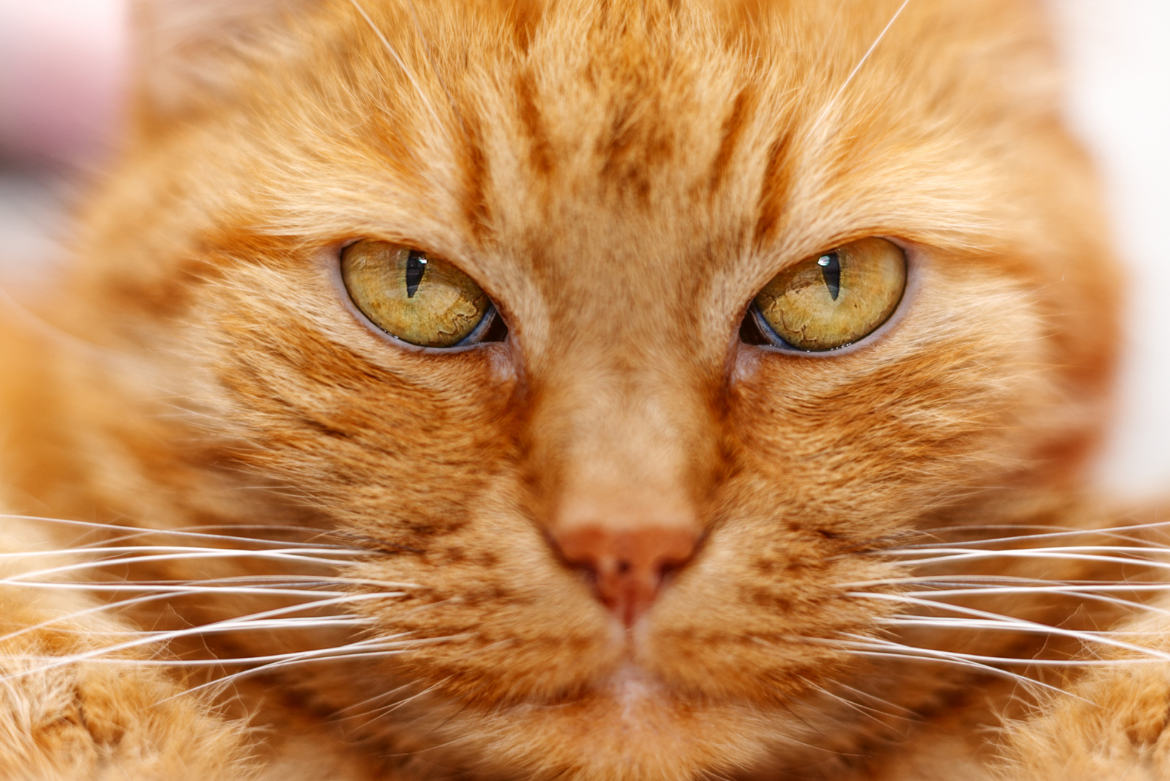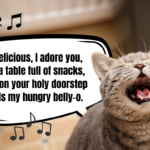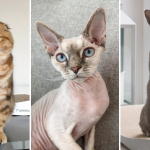Living under one roof with a senior cat can sometimes be a challenge. How to deal with it? We will try to find an answer to this question. Read to the end to see if we’ve made it. 🙂
When is a cat elderly?
Before we start creating the ideas how to make the graying fur happy, it’s worth considering the issue of cat age first. Because when exactly can a cat be called an old one? As with humans, there’s generally no exact age limit at which a pet begins old age. It will be determined by various factors – from age, to genetic conditions or a history of diseases. It’s assumed that a cat living 11 human years may already claim the title of senior, although there is another classification that applies even to older fur – the so-called a “geriatric” cat, that is 15 years old cat and older.
If you have a problem with determining the age of your fur, check out our cheat sheet below.
How to care for an old cat?
Now, when we know if we’re dealing with an old cat, it’s time to move on to the title issue, i.e. ways to take care of an elderly furry. Caring for an aging cat is slightly different than for a lively and energetic young cat – needs, physical activity and even appetite change.
I don’t recognize this cat!
Aging cat may not completely resemble itself from years ago, which doesn’t mean that it’s not the same animal as it used to be. With age, the furry’s physical activity usually decreases, and the pet becomes less mobile, tends to be more lethargic and less likely to engage in games that require a lot of exercise. Over time, changes in the cat’s physiognomy can be seen, and lower muscle tension affects the reduced physical performance – the furry chases the ball less often or less enthusiastically, although he still has the same willingness. Does this mean that we should force him to train every day to keep it in good shape? Or maybe just the opposite – leave it alone? Well, the truth is as usual in the middle. Let us engage the cat in play, but not by force! It is better to adjust the dynamics of the day to the pet’s abilities – when he wants to play, follow the blow, and when we see that our taunts are meaningfully ignored – just let go. After all, we will not persuade our own grandfather or grandmother to participate in the marathon overnight! It is always worth having this comparison at the back of the head, especially when we forget that the cat’s behavior is governed by its own – resulting from age – laws.
Less appetite and thirst
We can easily recognize an older cat not only by its gray mustache and faded fur, but also by its lower appetite compared to younger representatives of its species. Senior cats will usually eat and drink less than a few years ago, due to less physical activity and more economical use of energy. With age, the tastes of a cat may also change – what he did not touch before may be a delicacy for him today. Be prepared for such an eventuality and change the food when you notice that your pet eats suspiciously little. If that doesn’t help, it’s time to visit the vet – to make sure that everything is alright.
Changes in the toilet
When a cat is getting older, we will also observe changes in the frequency of visiting the litter box. In this case it can be different – either the cat will visit the toilet more often (recurrent diarrhea) or on the contrary – too rarely (constipation). In both cases, treatment will be necessary, but this state of affairs should be accepted and relieved when possible. Older cats also do their things outside the litter box – it’s also worth being prepared for this circumstance and if such an incident occurs – remember that it was rather feline dementia than malignancy of the furry. And also that something like this could happen again!
Other health problems
An elderly cat is more likely to suffer from various diseases, ranging from diabetes to infections, cancer, arthritis and kidney failure. The general weakening of the immune system due to agemakes senior cats more at risk of disease than younger furries. You can’t fight it, you have to accept it. Just like regular visits to the vet.
Important:
In older cats, as in humans, there is also an impairment of the senses – eyesight, hearing and smell deteriorate (this in turn may affect the aforementioned lower appetite). If the cat’s eyesight gets worse, it’s worth securing the surroundings so that it doesn’t bump into objects that may harm it and surround the pet with objects that will not endanger its health or life in any way. Resign from highly placed shelves for lounging in favor of the lower scratchers or lairs.
Control visits at least once every 6 months
For an older cat, regular meetings with the vet become everyday life. This is due to, firstly, prevention (the animal is more likely to be at risk of diseases, so it needs to be examined more often), and secondly – perhaps the existing diseases and other ailments that the pet may have acquired during its long life. Regular checkups and curative therapies are something you need to be prepared for.
As you can see, living with an elderly cat under one roof does not have to be difficult, and you can get used to everything (both more frequent visits to the vet and also cleaning!). 🙂
What are your experiences with old cats, fabCats? Would you add anything else to our list? Leave your comment!




